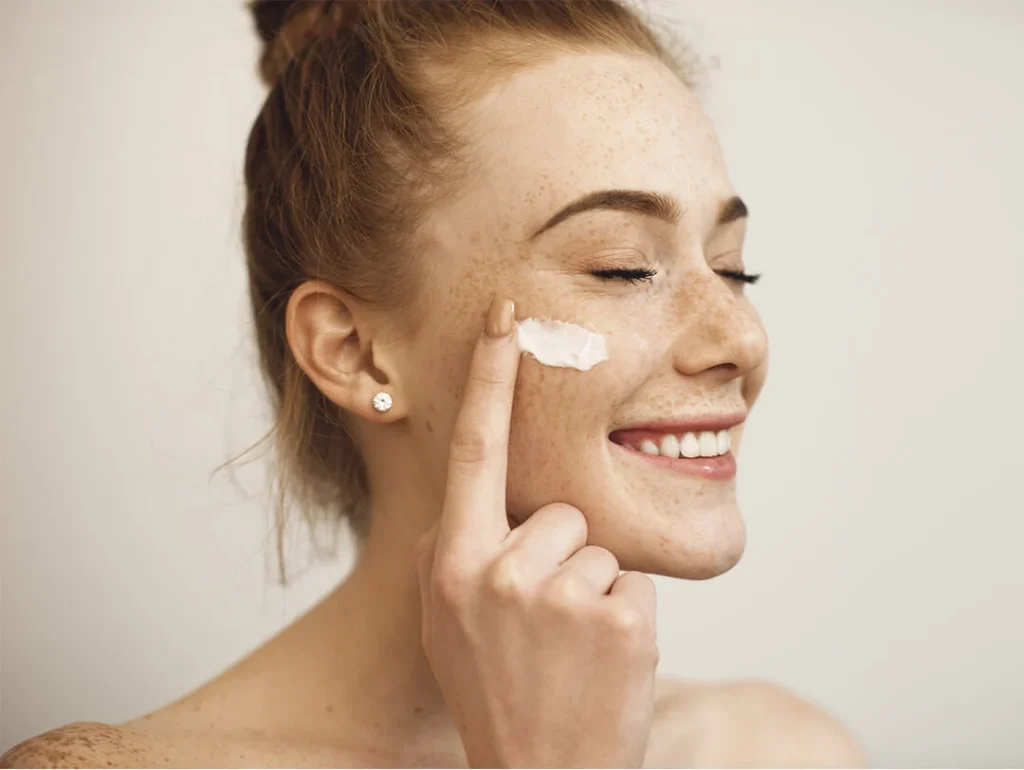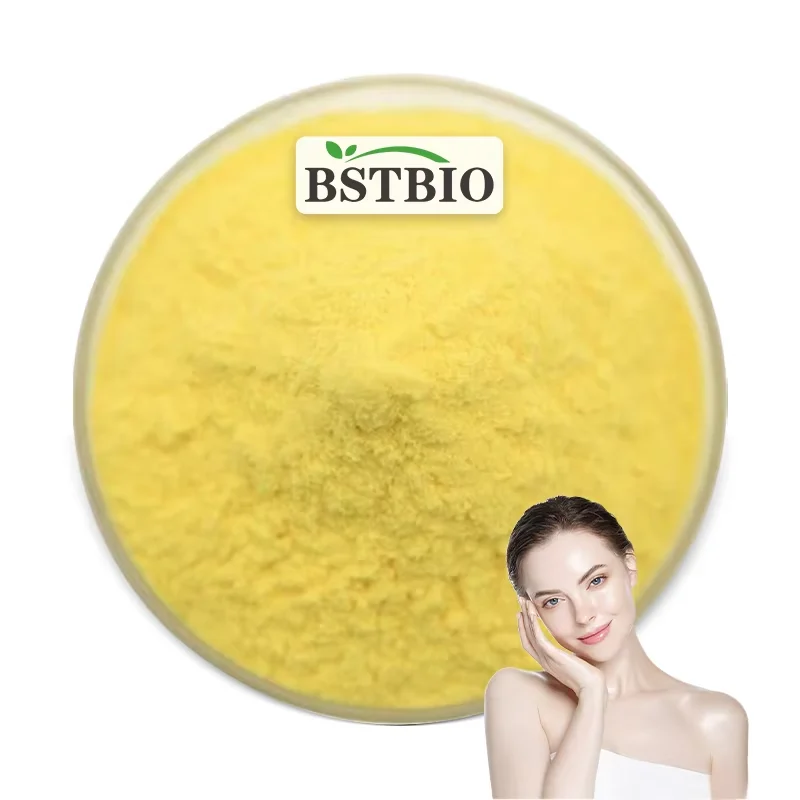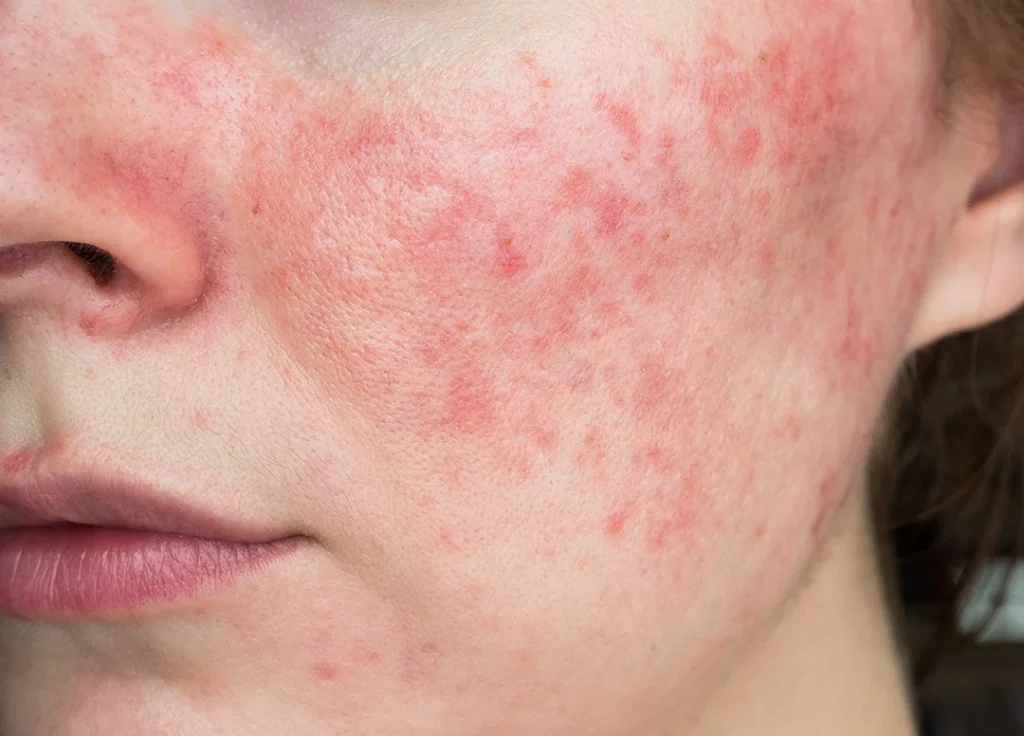Für jeden, der sich ernsthaft mit Hautpflege beschäftigt, ist Retinol ein Name, der Respekt verdient. Es ist der "Goldstandard" für Anti-Aging, der Wirkstoff, den Dermatologen seit Jahrzehnten empfehlen, um Falten zu glätten, dunkle Flecken zu verblassen und der Haut ein jugendliches Strahlen zurückzugeben. Aber mit großer Macht kommt... nun ja, große Irritation. Das ist das Retinol-Paradoxon: Wir lieben die Ergebnisse, aber wir fürchten die Nebenwirkungen. Die Rötungen, das Peeling, die Trockenheit - es ist eine Reise, die viele von uns beginnen, aber nicht beenden können.
Was wäre, wenn es einen Weg gäbe, die unglaublichen Vorteile ohne den Kampf zu bekommen? Geben Sie Hydroxypinacolon-Retinoat (HPR)ein Retinoid der nächsten Generation, das aufgrund seiner Fähigkeit, genau das zu tun, hohe Wellen schlägt.
Dies ist der ultimative Leitfaden zum Verständnis dieser beiden Inhaltsstoffe. Wir tauchen in die Wissenschaft ein - in einfachen Worten - und geben Ihnen einen klaren, ehrlichen Vergleich, damit Sie endlich entscheiden können, welcher Inhaltsstoff wirklich einen Platz in Ihrem Hautpflegeregal verdient hat.
Was ist Retinol? Das Gute, das Schlechte und das Peeling
Was genau ist also Retinol? Es ist ein wirkungsvolles Derivat von Vitamin A, das für seine Fähigkeit bekannt ist, das Verhalten der Hautzellen grundlegend zu verändern. Der Zauber liegt in einem Prozess, der als "Retinoid-Konversionsweg" bezeichnet wird. Wenn Sie Retinol auftragen, ist es nicht sofort aktiv. Ihre Haut muss es erst in seine bioaktive Form, die Retinsäure, umwandeln.
Der Prozess sieht folgendermaßen aus: Retinol → Retinaldehyd → Retinolsäure (die aktive Form)
Sobald es zu Retinsäure wird, ist das System einsatzbereit. Die Vorteile sind erwiesen und tiefgreifend:
- Es fördert die Kollagenproduktionreduziert sichtbar feine Linien und Fältchen.
- Es beschleunigt den ZellumsatzDie Haut wird glatter und strahlender und Hyperpigmentierungen werden gemildert.
- Es hilft, die Poren zu entstörenDas macht es zu einem starken Verbündeten gegen Akne.
Dieser Umwandlungsprozess ist jedoch genau der Grund für die berüchtigten Nebenwirkungen von Retinol. Die unangenehme "Retinisierungsphase" - Schälen, Schuppenbildung und Rötung - ist der Preis, den Ihre Haut für die harte Arbeit zahlt. Für viele, insbesondere für Menschen mit empfindlicher Haut, ist diese Barriere einfach zu hoch, um sie zu überwinden.
Was ist Hydroxypinacolon-Retinoat (HPR)? Treffen Sie den fortschrittlichen Cousin von Retinol
Wenn Retinol der etablierte Herrscher ist, denken Sie an Hydroxypinacolon-Retinoat (HPR) als sein klügerer, effizienterer Nachfolger. Auf den Zutatenlisten ist es oft unter seinem Handelsnamen zu finden, Granaktives Retinoid.
Was macht HPR zu einem Wendepunkt? Sein Hauptvorteil ist elegant und einfach: Es muss nicht von der Haut umgewandelt werden.
HPR ist ein Ester der Retinsäure, was bedeutet, dass es bereits in einer Form vorliegt, die bereit ist, zu wirken. Es kann binden direkt zu den Retinoid-Rezeptoren in Ihren Hautzellen und beginnt sofort mit der Übermittlung seiner Botschaft.
Lassen Sie uns eine Analogie verwenden:
Retinol ist ein Bote, der zwei Sicherheitsstufen durchlaufen muss, bevor er gehört wird. HPR hat einen VIP-Ausweis und kommt direkt rein.
Diese direkte Wirkung ist das Geheimnis seiner Kraft und seiner Sanftheit. Da Ihrer Haut die anstrengende Umwandlungsarbeit erspart bleibt, wird das Potenzial für Irritationen drastisch reduziert. Außerdem ist HPR in den Formulierungen stabiler, d. h. das Produkt, das Sie kaufen, bleibt vom ersten bis zum letzten Pumpstoß wirksam.
Kopf-an-Kopf-Rennen: HPR vs. Retinol Showdown
Lassen Sie uns diese beiden Kraftpakete Seite an Seite betrachten. Sie haben zwar das gleiche Ziel - jüngere, gesündere Haut -, doch ihre Methoden, um dorthin zu gelangen, liegen Welten auseinander.
| Merkmal | Hydroxypinacolon-Retinoat (HPR) | Retinol |
|---|---|---|
| Aktion | Bindet direkt an Rezeptoren | Erfordert zweistufige Umwandlung |
| Irritation | Sehr niedrig | Mäßig bis hoch |
| Wirksamkeit | Hoch (vergleichbare Ergebnisse) | Hoch (Jahrzehnte der Forschung) |
| Geschwindigkeit | Oft schnellere Ergebnisse | Langsamer wegen der Umstellung |
| Stabilität | Hoch | Gering (verschlechtert sich leicht) |
| Am besten für | Empfindliche Haut, Anfänger, Retinol-intolerant | Unempfindliche Haut, preisbewusste Nutzer |
Wirksamkeit und Ergebnisse: Was ist wirksamer?
Dies ist die Millionen-Dollar-Frage. Für Retinol gibt es einen Berg unabhängiger Forschungsergebnisse. Für HPR, das neuer ist, liegen Daten vor, die größtenteils von den Herstellern stammen. Sie zeigen, dass HPR vergleichbare und manchmal sogar bessere Ergebnisse bei der Faltenreduzierung und der Verbesserung der Textur liefert - oft ohne die frustrierenden Nebenwirkungen.
Der Irritationsfaktor: Was ist sanfter?
Das ist der K.O.-Schlag. HPR gewinnt, ohne Wenn und Aber. Da der Umwandlungsprozess, der Entzündungen auslöst, vollständig umgangen wird, bietet HPR eine viel freundlichere, sanftere Erfahrung. Das ist der wichtigste Grund für einen Umstieg.
Geschwindigkeit der Aktion: Wer gewinnt das Rennen?
Da es sofort wirkt, kann HPR oft schneller als Retinol sichtbare Verbesserungen der Hautstruktur und der Ausstrahlung bewirken. Sie müssen nicht wochenlang darauf warten, dass sich Ihre Haut anpasst.
Stabilität und Formulierung: Was das für Ihr Regal bedeutet
Retinol ist bekanntermaßen empfindlich und zerfällt, wenn es der Luft und dem Licht ausgesetzt wird. HPR ist von Natur aus stabiler, was die Formulierung erleichtert und sicherstellt, dass Ihr Produkt während seiner gesamten Lebensdauer wirksam bleibt.
Wer sollte Hydroxypinacolon-Retinoat (HPR) wählen?
HPR ist mit Sicherheit die richtige Wahl für Sie, wenn:
- Sie haben empfindliche oder reaktive Haut. Dies ist seine größte Stärke.
- Sie sind ein Retinoid-Anfänger und mit einem wirksamen, aber sanften Mittel beginnen wollen.
- Sie haben Retinol in der Vergangenheit ausprobiert und aufgegeben wegen der Reizung.
- Sie wollen starke Anti-Aging-Ergebnisse mit minimaler Ausfallzeit und Unbehagen.
Wer sollte Retinol verwenden?
Trotz der Vorteile von HPR ist Retinol nicht überflüssig. Es könnte immer noch Ihr Favorit sein, wenn:
- Sie haben eine widerstandsfähige, tolerante Haut und verwenden bereits mit Freude Retinol.
- Sie haben ein sehr knappes Budgetda Retinol in vielen erschwinglichen Produkten enthalten ist.
- Sie vertrauen nur auf Inhaltsstoffe, die durch jahrzehntelange, unabhängige Langzeitstudien belegt sind.
Wie Sie Ihr Retinoid verwenden: Beste Praktiken für den Erfolg
Unabhängig davon, wofür Sie sich entscheiden, sind die Regeln für die Zusammenarbeit dieselben. Befolgen Sie diese Schritte, um alle Vorteile zu nutzen, ohne dass es zu einem Drama kommt.
- Langsam anfangen. Beginnen Sie damit, es nur 2-3 Abende pro Woche zu verwenden. Lassen Sie sich von Ihrer Haut sagen, wann sie bereit für mehr ist.
- Eine Erbse ist genug. Mehr ist nicht besser. Eine erbsengroße Menge reicht für Ihr gesamtes Gesicht.
- Auf die trockene Haut auftragen. Warten Sie nach der Reinigung ein paar Minuten, bevor Sie Ihr Retinoid auftragen, um Irritationen zu vermeiden.
- Versuchen Sie die "Sandwich-Methode". Wenn Ihre Haut besonders empfindlich ist, tragen Sie eine Schicht Feuchtigkeitscreme auf, lassen Sie sie einziehen, tragen Sie Ihr Retinoid auf und versiegeln Sie es dann mit einer weiteren Schicht Feuchtigkeitscreme.
- Sonnenschutzmittel sind unverzichtbar. Retinoide machen Ihre Haut anfälliger für Sonnenschäden. Sie müssen jeden Tag einen LSF 30+ tragen. Keine Ausnahmen.
Antworten auf Ihre wichtigsten Fragen (FAQ)
Was ist der Unterschied zwischen Hydroxypinacolon-Retinoat und Granactive Retinoid?
Sie sind im Wesentlichen dasselbe. Granactive Retinoid ist einfach der Markenname für eine HPR-haltige Lösung. Wenn Sie das eine sehen, bekommen Sie das andere.
Was ist besser gegen Akne?
Beide sind wirksam, aber da HPR weniger entzündlich ist, kann es die bessere Wahl für zu Akne neigende Personen sein, die feststellen, dass die Reizung durch Retinol ihre Ausbrüche noch verschlimmert.
Kann ich HPR mit Vitamin C oder Peelingsäuren verwenden?
Ja, aber mit Bedacht. Am besten verwenden Sie sie zu unterschiedlichen Tageszeiten (z. B. Vitamin C am Morgen, HPR am Abend) oder abwechselnd in der Nacht, um Ihre Haut nicht zu überfordern.
Das Fazit: Ist HPR die Zukunft der rezeptfreien Retinoide?
Ist es also an der Zeit, Ihr Retinol wegzuwerfen? Nicht unbedingt. Aber Hydroxypinacolon-Retinoat stellt eine bedeutende und intelligente Entwicklung in der Hautpflege dar. Es bietet eine wirksame Lösung für das uralte Dilemma, wie man die tiefgreifenden Anti-Aging-Effekte eines Retinoids ohne die frustrierende Erholungsphase nutzen kann.
Für Anfänger, für empfindliche Haut und für alle, die in der Vergangenheit mit Retinol "verbrannt" worden sind, HPR ist nicht nur eine gute Alternative - es ist wahrscheinlich die bessere Wahl. Es hält, was es verspricht: einen sanfteren und dennoch hochwirksamen Weg zu einer glatten, straffen und strahlenden Haut, wie Sie sie sich wünschen.
Letztlich geht es nicht darum, dass das eine "gut" und das andere "schlecht" ist. Es geht darum, die Wissenschaft zu verstehen und eine fundierte Entscheidung zu treffen, die den einzigartigen Bedürfnissen Ihrer Haut gerecht wird.



